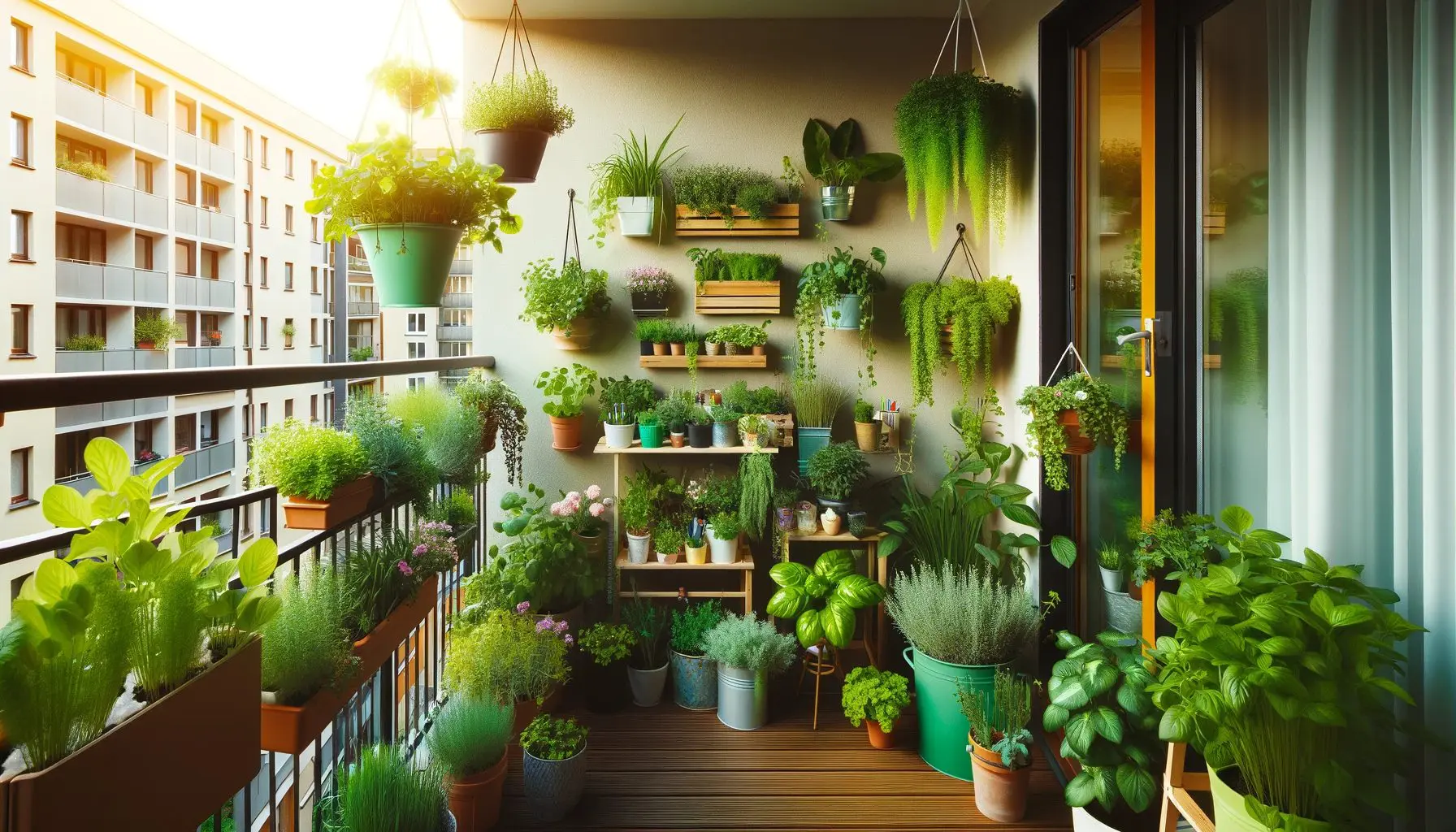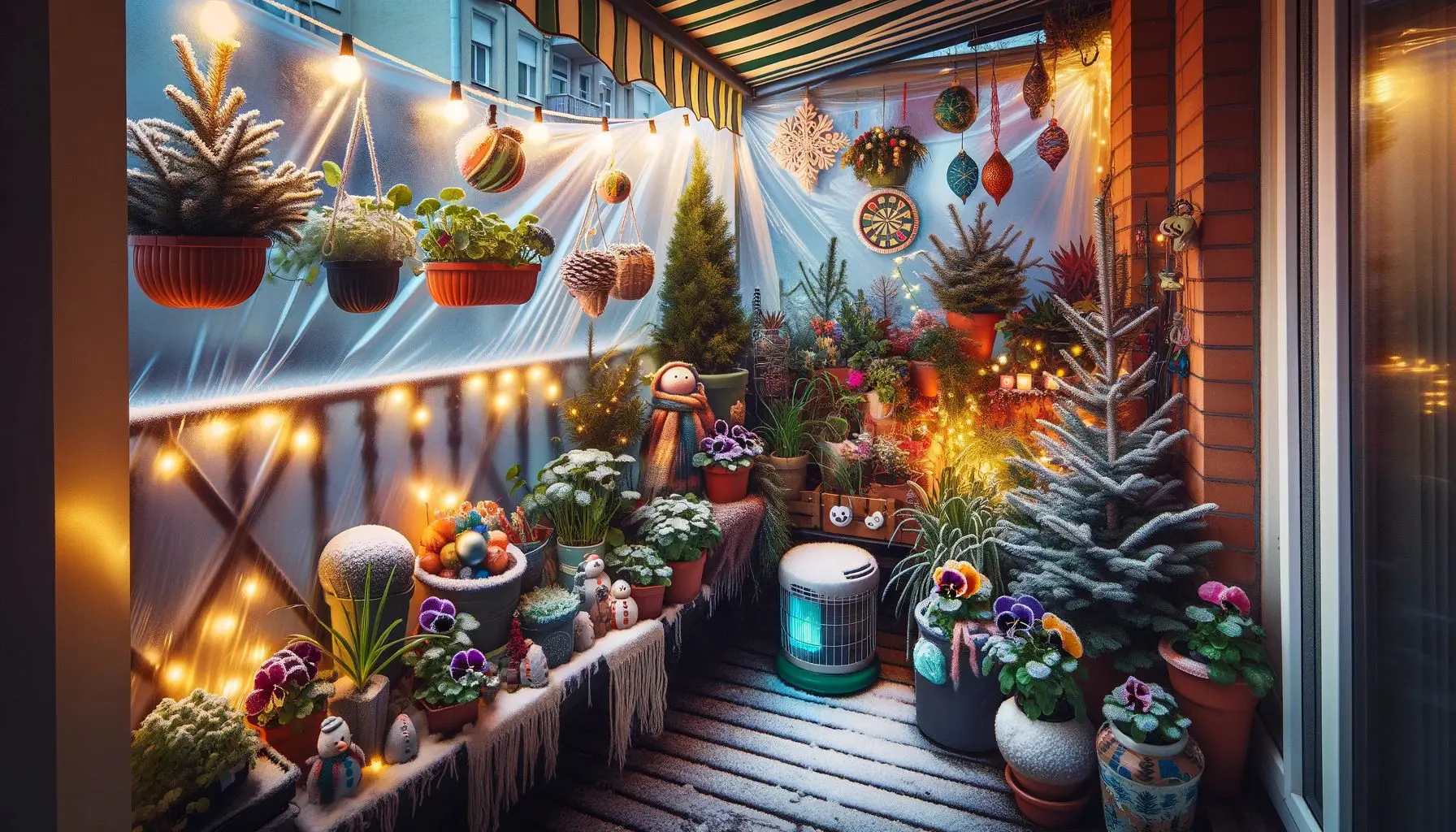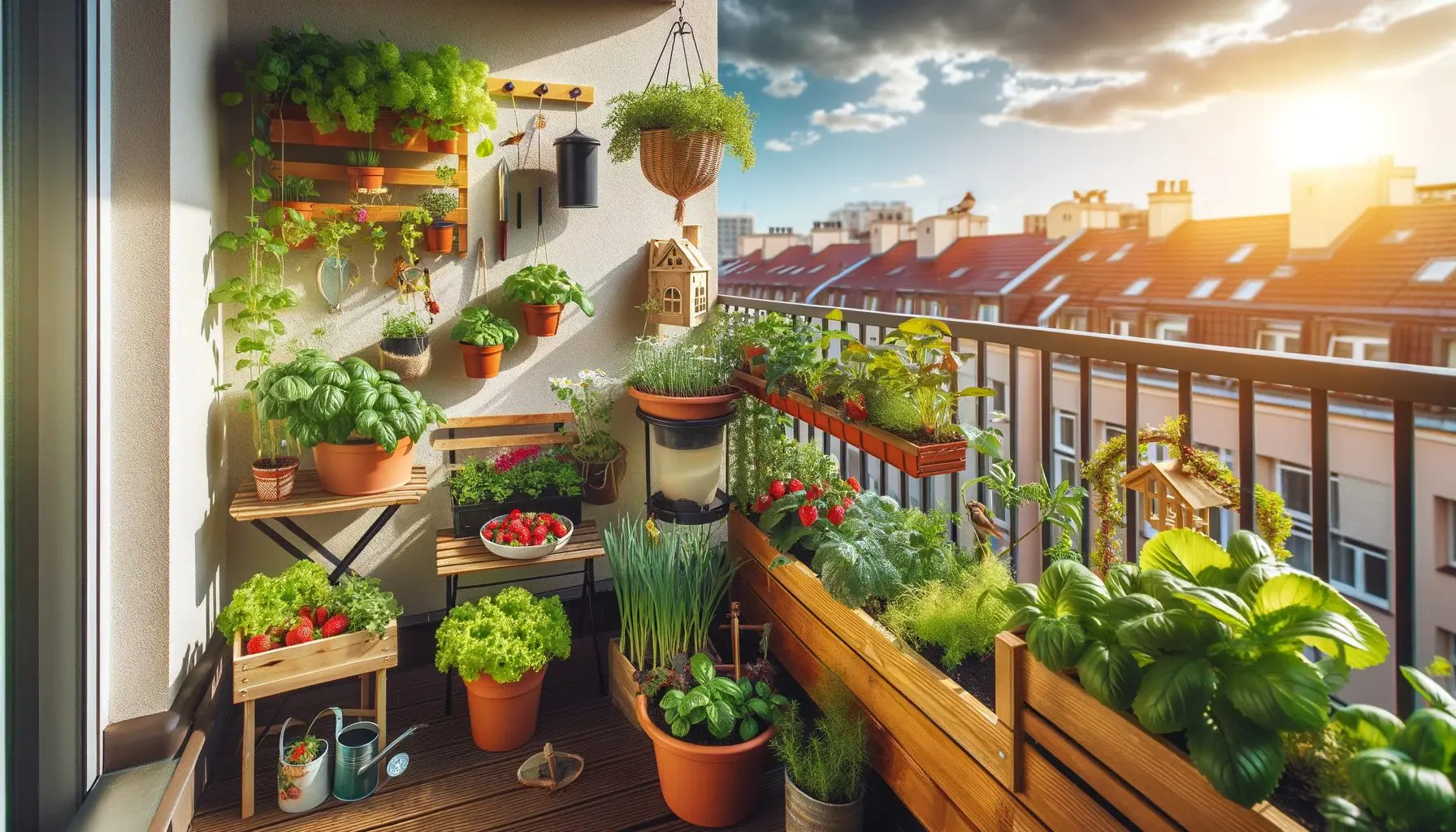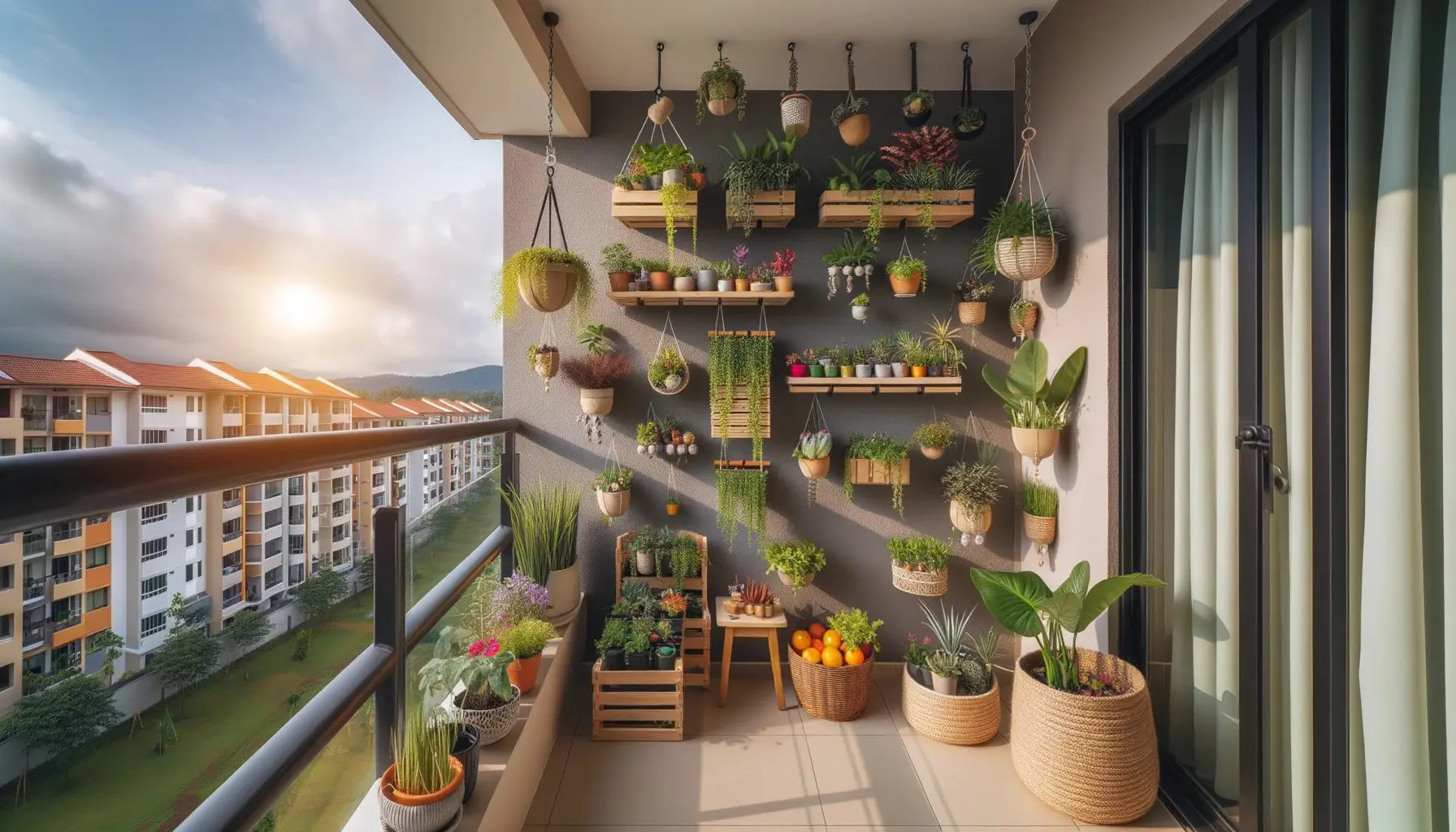This post contains affiliate links. If you buy something from one of our links we may earn a commission. Thanks
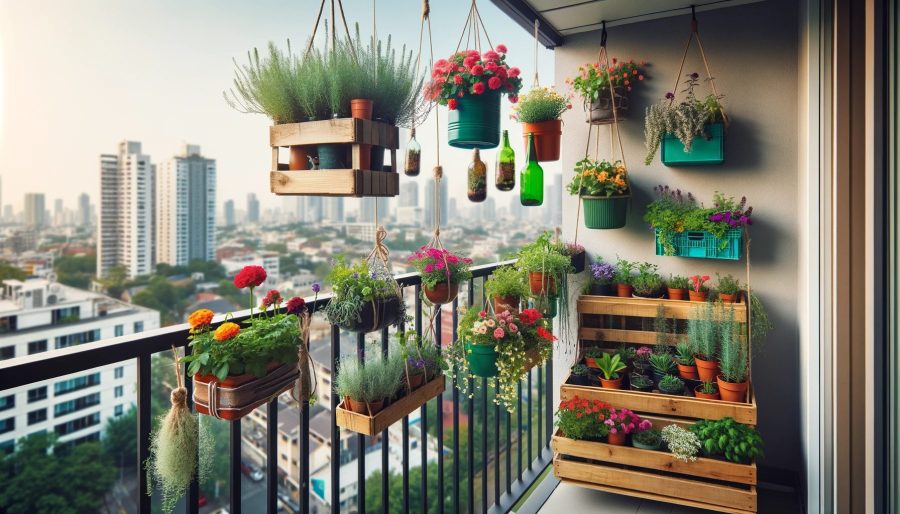 Explore budget friendly balcony gardening tips! Learn how to create a lush oasis on a budget with our easy, cost-effective gardening ideas.
Explore budget friendly balcony gardening tips! Learn how to create a lush oasis on a budget with our easy, cost-effective gardening ideas.
Budget Gardening Ideas Key Takeaways:
- Budget friendly balcony gardening involves using cost-effective methods like repurposing containers, growing from seeds, and making DIY compost.
- It’s about creating a lush garden space economically, by maximizing resources and embracing a DIY approach.
- Plan your garden to maximize space and budget.
- Use recycled containers for an eco-friendly approach.
- Start plants from seeds or cuttings for cost savings.
- Choose easy-to-grow plants like herbs and resilient flowers.
- Create your own compost with kitchen and yard waste.
- Exchange plants and seeds within the gardening community.
- Look for sales and discounts on gardening supplies.
- Make your own DIY garden supplies.
- Practice efficient watering to reduce costs.
- Regular maintenance and TLC keep your garden thriving.
21 Budget Friendly Balcony Gardening Ideas
Welcome to the world of budget friendly balcony gardening! It’s all about turning your balcony into a green paradise without emptying your wallet.
Join us as we dive into simple, creative ways to grow a thriving garden on a shoestring budget.
Start with a Plan
Before starting your balcony garden, it’s crucial to plan. Assess your space and decide which plants you’d like to grow.
A well-thought-out plan helps you stay within budget and avoid impulsive purchases.
Utilize Recycled Containers
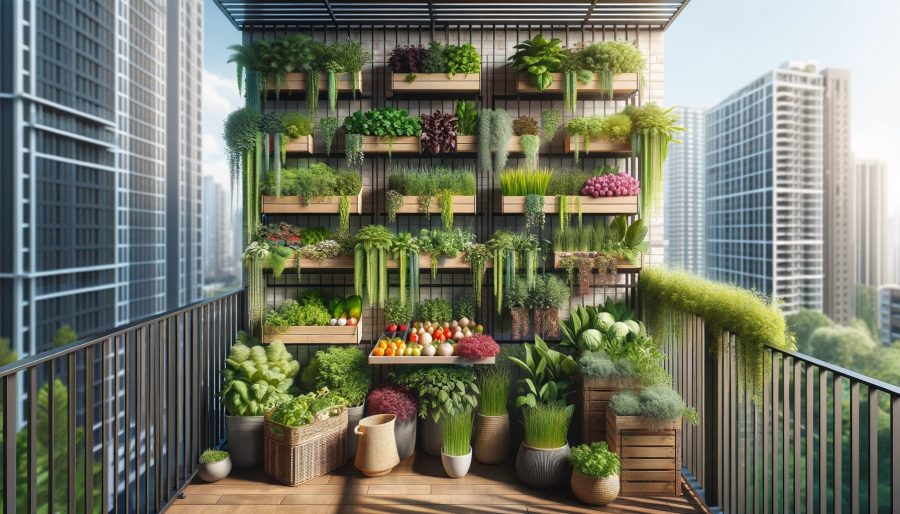
Instead of buying new planters, consider using recycled containers. Look around your home for items like plastic bottles or wooden crates.
This not only saves money but also adds a unique touch to your garden.
If you don’t have space for a vegetable garden or if your present site is too small, consider raising fresh, nutritious, homegrown vegetables in containers. A window sill, patio, balcony, or doorstep can provide sufficient space for a productive container garden. Problems with soil-borne diseases, nematodes, or poor soil can also be overcome by switching to container gardening. Virginia Tech
Opt for Seeds and Cuttings
Growing plants from seeds or cuttings is a cost-effective method. Seeds offer a wide variety and cuttings let you expand your garden for free.
With patience, these can blossom into a lush garden.
Focus on Easy-to-Grow Plants
Select plants that are easy to care for. Hardy herbs like basil and resilient flowers like marigolds are great choices.
They require minimal care and are generally more affordable.
Create Your Own Compost
Creating compost from kitchen scraps and yard waste is a sustainable way to nourish your plants.
This reduces waste and eliminates the need for expensive fertilizers.
Exchange Plants and Seeds
Join a local gardening community or online forums to exchange plants and seeds.
This is a cost-effective way to diversify your garden and connect with fellow gardeners.
Take Advantage of Sales and Discounts
Keep an eye out for sales at garden centers and nurseries. Purchasing discounted gardening tools and supplies can lead to significant savings.
DIY Garden Supplies
Many gardening supplies can be made at home. Use everyday items to create plant labels, seedling trays, and even simple trellises.
Water Wisely
Save on water bills by using a watering can instead of a hose. Collecting rainwater is another efficient and cost-saving method.
Regular Maintenance and TLC
Regularly prune and deadhead plants to promote healthy growth. Preventing diseases and removing weeds promptly can save you from incurring additional costs.
Grow From Seeds
Growing vegetables, annuals, and perennials from seed is an economical choice.
For beginners, choose seeds that are easy to start and can be planted directly in the ground.
Find Used (Or Free) Tools & Equipment
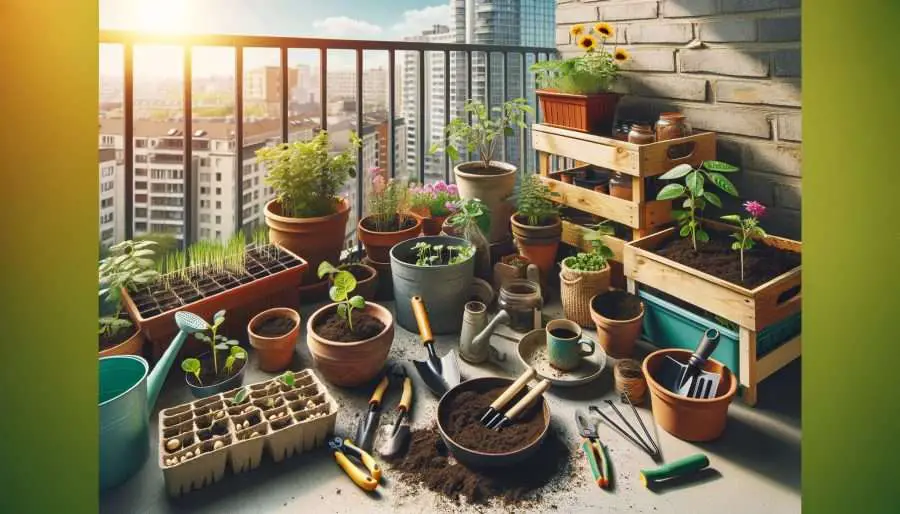
Opt for used gardening tools and equipment. Garage sales and online marketplaces are excellent sources for finding these items at a fraction of their original cost.
Collect & Save Seeds
Learning how to collect seeds from your garden is a wise move for budget gardeners.
Store excess seeds properly to use them in the coming years.
Participate In Seed Swaps
Engage in seed swaps with friends or through online communities. This is a cost-effective way to obtain a variety of seeds.
Repurpose & Upcycle
Get creative with upcycling. Use items like old containers or scrap wood to make garden beds, trellises, or plant markers.
This not only saves money but also adds a unique charm to your garden.
Don’t Throw It, Grow It!
Utilize kitchen scraps like seeds or root stalks from vegetables to grow new plants. It’s a simple yet effective method to expand your garden.
Regrowing Veggies From Kitchen Scraps
Some will and some won’t and here is a video that shows what will and won’t work.
Take Cuttings & Divisions
Propagate plants through cuttings and divisions. It’s a cost-effective way to create new beds or fill up containers.
Look For Free & Inexpensive Plants
Seek out gardeners who are willing to share or divide their surplus plants.
Farmers Markets and community sales are also good places to find budget-friendly plants.
Buy Small Starter Plants
Purchasing smaller starter plants or plugs is more economical than buying mature plants.
They take longer to grow but offer significant cost savings.
Wait For Plants To Go On Sale
Delay your plant purchases until after the initial spring rush. Garden centers often offer discounts during the summer and fall.
Shop End-Of-Season Sales
Buy gardening tools and equipment during end-of-season sales to save money.
Late summer and early fall are ideal times for these purchases.
Make Your Own Compost
DIY composting is easy and cost-effective. Repurpose materials like fencing or chicken wire to make compost bins.
Make Your Own Worm Farm
You can repurpose larger plastic storage totes with lids to create your own worm farm.
Feed them your kitchen scraps. Worm castings are a very effective organic fertilizer.
Exchange Seedlings With Friends
If you have excess seedlings, consider swapping them with friends or neighbors. This expands your garden variety without any additional costs.
Grow Organically
Organic gardening is not only budget-friendly but also healthier for your garden. Use natural remedies and organic pest deterrents to save on chemical costs.
Trade Plants
Divide and trade your perennials for new varieties. This is a great way to add diversity to your garden on a budget.
Overwinter Plants Indoors
Many annuals can actually survive indoors during the winter. This saves you from purchasing new plants each spring.
Collect Rainwater
Collecting rainwater reduces your water bill and is beneficial for your plants. DIY rain barrels are an economical option for rainwater collection.
Choose Low Maintenance Plants
Opt for native or common varieties that are low maintenance. They are generally more affordable and require less care.
Saving & Using Leaves
Leaves are an excellent, free resource for mulching and composting. Collect and utilize leaves to enrich your garden soil.
Budget Friendly Balcony Gardening Ideas FAQs
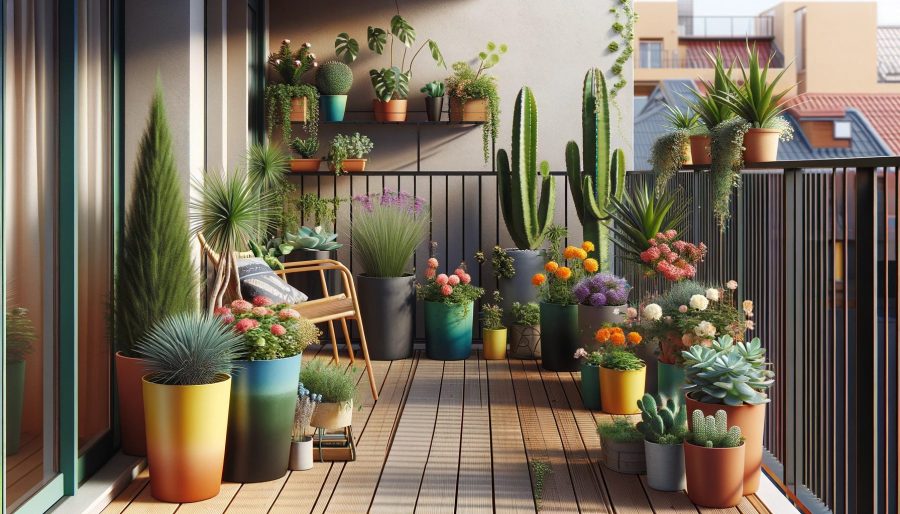
Creating a balcony garden that is both beautiful and budget-friendly often raises several questions.
Whether you’re new to gardening or looking for ways to cut costs, our FAQ section aims to provide helpful insights.
Here, we answer some of the most common queries to guide you in cultivating your dream balcony garden without overspending.
Q: What are the most cost-effective plants to grow in a balcony garden?
A: Hardy herbs like basil, mint, and rosemary, as well as resilient flowers such as marigolds and petunias, are cost-effective choices. They are easy to grow and maintain and often come at affordable prices.
Q: Can I use household items as plant containers?
A: Absolutely! Repurposing household items like plastic bottles, buckets, or wooden crates as plant containers is a budget-friendly and eco-friendly approach. Just ensure they have proper drainage.
Q: Is it cheaper to grow plants from seeds or buy starter plants?
A: Growing plants from seeds is generally cheaper than buying starter plants.
Seeds are inexpensive and can yield a larger number of plants.
However, starter plants can save time and are easier for beginners.
Q: How can I save on gardening tools and equipment?
A: Look for used gardening tools and equipment at garage sales, and online marketplaces, or borrow from friends and neighbors.
This approach can significantly reduce your initial gardening expenses.
Q: Are there any low-cost alternatives to commercial fertilizers?
A: Yes, creating your own compost from kitchen scraps and yard waste is a great alternative.
It’s a sustainable way to provide nutrients to your plants without the cost of commercial fertilizers.
Q: How can I save water in my balcony garden?
A: Use a watering can to target plants directly, collect rainwater in barrels, and use leftover water from household chores.
These methods help in conserving water and reducing your water bill.
Q: What are some simple DIY garden projects for a balcony?
A: You can create DIY plant labels, seedling trays, and trellises using materials like popsicle sticks, old containers, and scrap wood.
These projects are not only cost-effective but also add a personal touch to your garden.
Q: How can I expand my garden without spending much?
A: Propagating plants from cuttings, participating in seed swaps, and exchanging plants with fellow gardeners are great ways to expand your garden for little to no cost.
Embracing Green Spaces: The Joy of Budget-Friendly Balcony Gardening
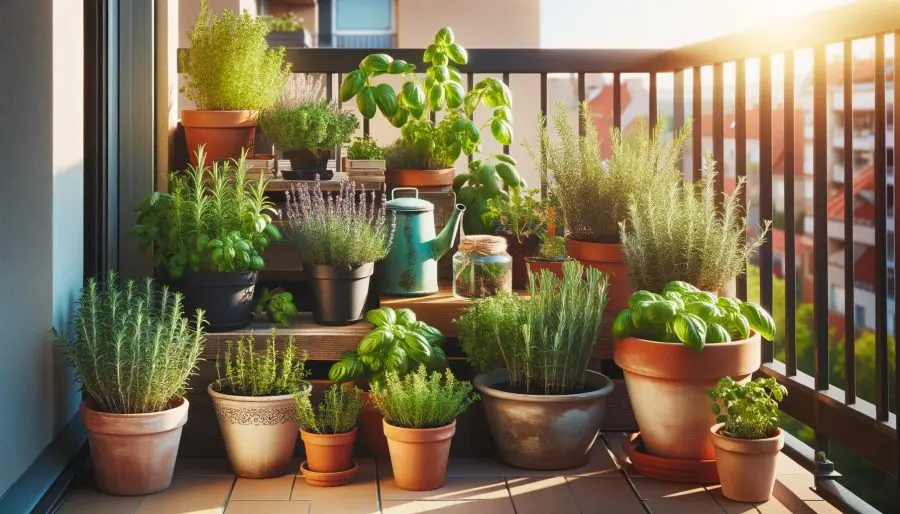
In conclusion, creating a lush balcony garden doesn’t require a hefty budget. With a bit of creativity, resourcefulness, and these key takeaways, you can cultivate a thriving green space that brings joy and serenity to your urban dwelling.
- Planning and Resourcefulness: Start with a clear plan and utilize what you have. Repurposing and upcycling materials can lead to unique and cost-effective garden solutions.
- Grow Smartly: Opting for seeds, cuttings, and easy-to-grow plants can significantly reduce costs while offering a rewarding gardening experience.
- Community Engagement: Engaging in seed swaps and plant exchanges not only saves money but also fosters a sense of community among fellow garden enthusiasts.
- DIY Approach: Embracing DIY projects for garden supplies and composting can turn waste into valuable resources, contributing to both environmental sustainability and cost savings.
- Water and Maintenance Wisdom: Adopting efficient watering practices and regular maintenance ensures the longevity and health of your plants, avoiding unnecessary expenses.
Remember, balcony gardening is not just about beautifying your space; it’s about creating an oasis where nature and nurture coexist harmoniously.
It’s a journey of learning, growth, and immense satisfaction, all achieved within the realms of a budget-friendly approach.
Related Content
Visit my Amazon Influencer Page for videos and gardening products Grow Your Own Garden


